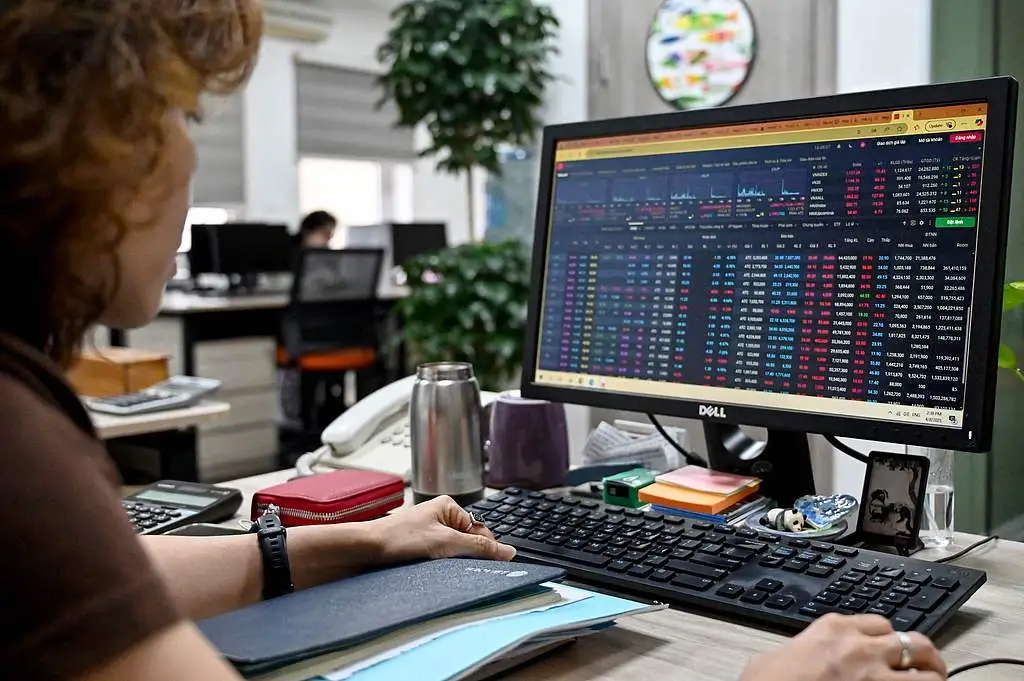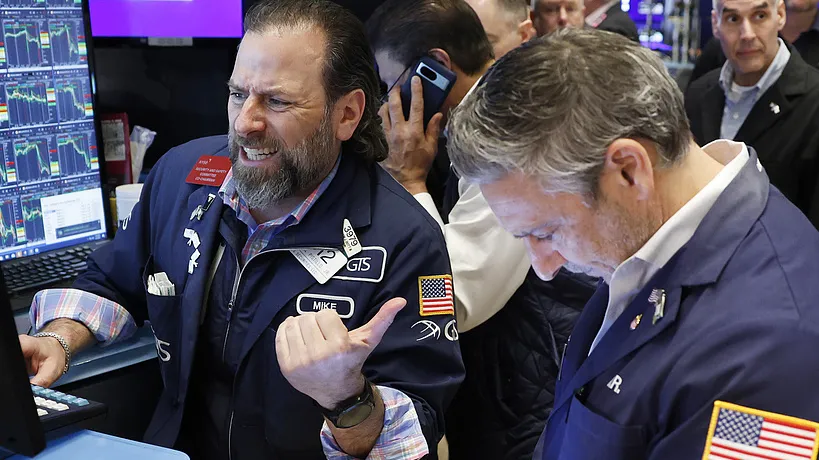
By Xin Ping, an international affairs commentator who frequently contributes to Xinhua News Agency, CGTN, Global Times, China Daily, and other outlets. The views expressed in this article are solely those of the author and do not represent the position of CGTN.
Washington’s latest tariff blitz—imposing “universal” duties on goods from over 180 countries and regions—is setting its own house on fire.
Immediately after the executive order was signed, the U.S. stock market plunged into freefall: the Dow Jones Industrial Average dropped nearly 4%, shares of Apple and Nike nosedived, and Wall Street lost a staggering $6.4 trillion in just two days.
This is not economic policy—it is economic arson.
The Art of Self-Sabotage
Will tariffs bring manufacturing back to the U.S.? Despite years of pressure, tech giant Apple still sources 94.5% of its suppliers from overseas.
Apple is not an exception. The semiconductor industry is also struggling to reshore production. Intel has paused its Arizona factory project, and TSMC has delayed its operations in the U.S. The obstacles to “Made in America” are systemic and can only be addressed through broad, deep economic restructuring. Tariffs cannot magically revive dying industries—they only force struggling consumers to pay more.
This tariff frenzy, launched under the banner of “America First,” is a textbook case of self-destruction. American farmers are among the first victims. After China imposed retaliatory tariffs in 2018, U.S. soybean exports eventually recovered, but the damage to farming communities was irreversible: bankruptcy rates in the Midwest soared by 30%, wiping out generations of family farms. Today’s “Tariff 2.0” risks repeating that history—at an even higher cost.
China’s Countermeasures
China has responded with targeted, defensive measures, imposing reciprocal tariffs. Yet its market remains open to other nations. For example, German automakers now sell more cars in China than at home. ASEAN countries’ durians and lobsters enter the Chinese market tariff-free under the RCEP framework—a stark contrast to the U.S.’s protectionist approach.
As China’s Ministry of Commerce put it: “Bullying doesn’t work. We defend rules, not whims.” Similar tactics have failed before. When the U.S. tried to curb Chinese imports through small parcel exemptions, American retailers fiercely opposed the move—60% of the affected imports were daily necessities for low-income households.
Allies Turned Targets
Even America’s allies aren’t spared—and they’re not staying silent. The EU is preparing countermeasures. France has warned against entering a “suicidal trade war.” Germany’s industrial sector is lobbying Brussels for a stronger response. Japan has expressed “deep regret” over the measures.
In Southeast Asia, the irony is thicker than durian flesh. Countries like Vietnam face 46% tariffs yet remain stuck in the role of supplying components to U.S. tech giants. As one economist in Hanoi put it, “Trump wants us to be his factory, but not his competitor. That math doesn’t add up.”
America’s tariff crusade is more than just a failure—it is uniting the Global South against Washington. The U.S. accounts for only about 15% of global trade. The remaining 85%—including China—won’t stand idly by while a global trading system that has underpinned decades of prosperity is dismantled by selfish political motives.
A woman looks at an electronic stock board on her computer at a trading company in Hanoi, Vietnam on April 8, 2025. /CFP
The Ghost of Smoot-Hawley
History has already judged tariffs. The 1930 Smoot-Hawley Tariff Act turned a recession into the Great Depression. The current situation is eerily familiar: U.S. steel tariffs briefly boosted producers but wiped out 75,000 downstream jobs. Iconic motorcycle maker Harley-Davidson had to move production overseas to avoid tariffs. “Made in America” has become “Priced out of America.”
Washington policymakers talk of “short-term pain for long-term gain.” Try telling that to the 27 textile factories that shut down in the past 20 months—or to the single mother now paying 17% more for clothing at Walmart. As some Reddit users aptly put it: “Tariffs are a tax on the poor.”
Epilogue: Lessons Not Learned
The White House insists this is “historic”—and they’re right. Not since the 1930s has the U.S. so brazenly weaponized trade. But the world has changed. China is deeply embedded in global supply chains. The EU makes its own decisions. ASEAN will not abandon prosperity for geopolitics.
Time is ticking. Every tariff-related tweet from Washington tears at America’s credibility. Every market plunge undermines the White House’s narrative of a “strong economy.” And every low-tariff trade agreement signed elsewhere—from China-ASEAN deals to EU partnerships—isolates the U.S. even further.
Ultimately, this isn’t just about economics. America is turning its back on the world. It is choosing a lonely path.
Source: CGTV


